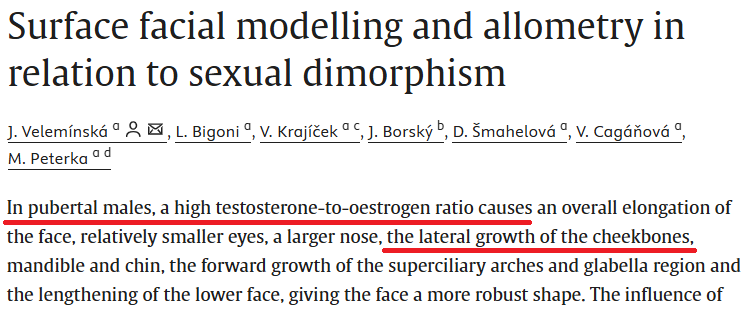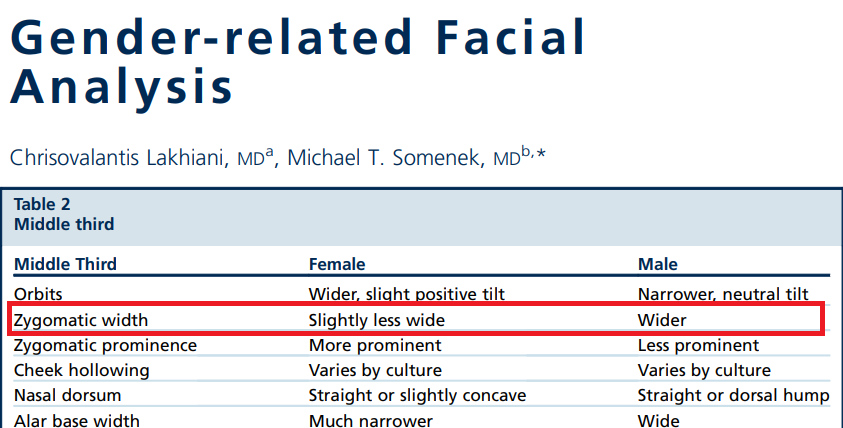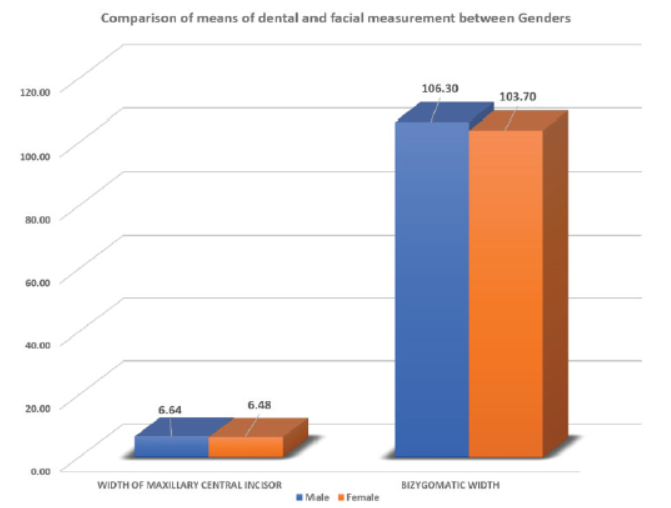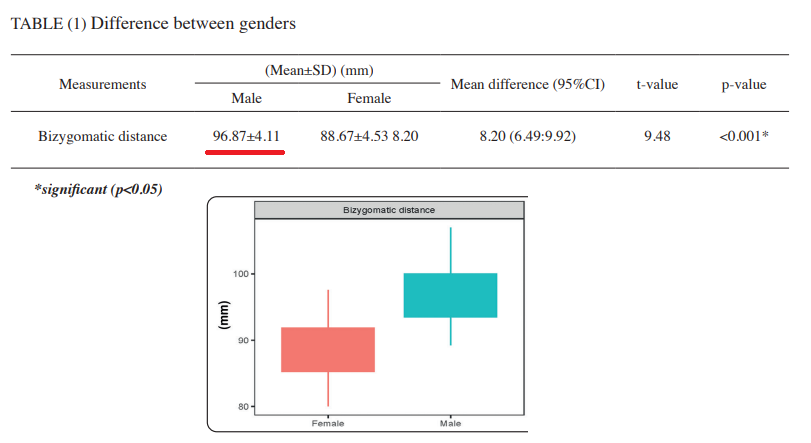Summary
Research shows that bi-zygomatic width, or the distance across the cheekbones, is generally larger in males, highlighting it as a masculine trait. Velemínská et al. (2012) found that during puberty, higher testosterone levels in males promote the lateral growth of cheekbones, resulting in greater bi-zygomatic width. Similarly, Lakhiani and Somenek (2019) confirmed that wider zygomatic widths are more prominent in males, reinforcing the idea that this feature is associated with masculinity. Abitha and Santhanam (2019) further examined these differences by measuring bi-zygomatic widths in 100 participants, split evenly between males and females. Their findings showed that males had an average width of 106.30mm, while females measured 103.70mm. A more recent study by Kenawy (2023) in Egyptian adults, using cone beam computed tomography, reported similar results. Males in the study had an average width of 96.87mm, compared to 88.67mm for females, emphasizing the sexual dimorphism in facial structure.
Research
According to Velemínská et al. (2012) during puberty in males, the influence of a high testosterone-to-oestrogen ratio results in various facial changes. Among these changes is the lateral growth of the cheekbones which suggests males usually have larger bi-zygomatic width.

Similarly, the study by Lakhiani and Somenek (2019) also found that males have wider/larger zygomatic widths than females, suggesting that a larger bi-zygomatic width is a masculine feature.

A study by Abitha and Santhanam (2019) examined the differences in bi-zygomatic width between males and females. The research involved 100 participants, equally divided between 50 males and 50 females. The findings revealed that males generally have a broader bi-zygomatic width, with an average measurement of 106.30 mm, compared to females, whose mean width was 103.70 mm.

Similarly, another more recent study by Kenawy (2023), titled “Evaluation of Bizygomatic Distance and Intermaxillary Distance as Sexual Dimorphic Tools in Egyptian Adults: A Cone Beam Computed Tomography Study,“ explored the differences in bi-zygomatic width between males and females. The research included 100 participants, evenly split between 50 males and 50 females. The results indicated that males have a greater bi-zygomatic width, with an average measurement of 96.87 mm, while females showed a narrower width, with a mean value of 88.67 mm.

References
Velemínská, J., Bigoni, L., Krajíček, V., Borský, J., Šmahelová, D., Cagáňová, V., & Peterka, M. (2012). Surface facial modelling and allometry in relation to sexual dimorphism. Homo, 63(2), 81-93. https://doi.org/10.1016/j.jchb.2012.02.002
Lakhiani, C., & Somenek, M. T. (2019). Gender-related facial analysis. Facial Plastic Surgery Clinics, 27(2), 171-177. https://doi.org/10.1016/j.fsc.2019.01.006
Abitha, T., & Santhanam, A. (2019). Correlation between bizygomatic and maxillary central incisor width for gender identification. Brazilian dental science, 22(4), 458-466. https://bds.ict.unesp.br/index.php/cob/article/view/1775
Kenawy, S. M. (2023). Evaluation of Bizygomatic Distance and Intermaxillary Distance as Sexual Dimorphic tools in Egyptian Adults: A Cone Beam Computed Tomography Study. Egyptian Dental Journal, 69(4), 2697-2704. https://dx.doi.org/10.21608/edj.2023.209708.2540